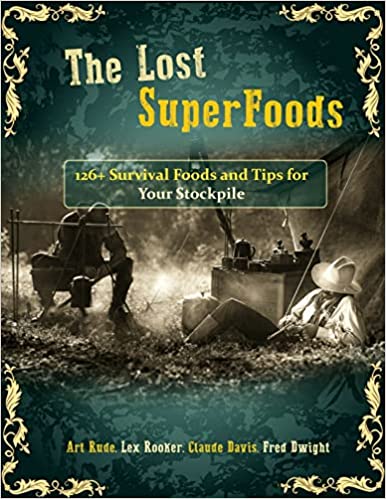126 Suvival Foods – Does it Work?
The Lost Superfoods by Claude Davis, Art Rude, Fred Dwight and Lex Rooker is a fascinating read that explores the world of forgotten foods and their incredible health benefits. The book introduces readers to a wide range of ancient superfoods that have been used for centuries by various cultures around the world. The authors delve into the history and cultural significance of these foods, while also providing practical tips on how to incorporate them into our modern diets. In this review, we will delve deeper into the content of the book and explore why it is a must-read for anyone interested in improving their health through natural and sustainable means.

Overview
The book is divided into two parts. Part one explores the history and cultural significance of the lost superfoods, while part two provides practical advice on how to incorporate them into our modern diets. In part one, the authors take us on a journey through time, exploring the various superfoods that were once revered by ancient cultures around the world. From the Incan root vegetable maca to the African fruit baobab, the book covers a wide range of foods that have been forgotten by modern society.
The authors also delve into the reasons why these foods have been forgotten. For example, the rise of industrial agriculture has led to a focus on monoculture farming, which has resulted in a loss of biodiversity and a decline in the availability of these superfoods. Additionally, the authors discuss how the modern food system prioritizes convenience over nutrition, leading to a preference for processed and packaged foods over natural, whole foods.
Part two of the book focuses on practical advice for incorporating these superfoods into our modern diets. The authors provide recipes and meal plans that show how these forgotten foods can be used to create delicious and healthy meals. They also offer tips on how to find these superfoods, including information on where to purchase them and how to store them.
Key Takeaways
One of the key takeaways from the book is the incredible health benefits of these lost superfoods. The authors cite numerous studies that show how these foods can improve our overall health and well-being. For example, maca has been shown to improve mood, energy levels, and sexual function, while baobab is high in vitamin C and antioxidants, making it a powerful immune-booster.
Another important takeaway is the environmental benefits of these superfoods. The authors argue that by incorporating these forgotten foods into our diets, we can help support sustainable agriculture and promote biodiversity. Many of these superfoods are naturally resistant to pests and diseases, which means that they can be grown without the use of harmful pesticides and herbicides.
Finally, the book highlights the importance of cultural preservation. By exploring the history and cultural significance of these superfoods, the authors help to preserve the knowledge and traditions of ancient cultures. They argue that by incorporating these foods into our diets, we can help to honor and respect these cultures and their traditions.
Critique
Overall, The Lost Superfoods is a well-researched and informative book that provides readers with valuable insights into the world of forgotten foods. However, there are a few areas where the book could be improved.
One area that could be expanded upon is the nutritional information provided for each superfood. While the authors do provide some information on the nutritional content of each food, it would be helpful to have a more detailed breakdown of the vitamins, minerals, and other nutrients found in each food.
Another area that could be improved is the section on finding and purchasing these superfoods. While the authors do provide some tips on where to find these foods, it would be helpful to have more specific information on where to purchase them, particularly for readers who may not have access to specialty health food stores.
Conclusion
In conclusion, The Lost Superfoods is a fascinating and informative read that provides readers with valuable insights into the world of forgotten foods. The authors do an excellent job of exploring the history and cultural significance of these superfoods while also providing practical tips on how to incorporate them into our modern diets. Through their research, the authors make a compelling case for the health and environmental benefits of these forgotten foods.
One of the strengths of the book is its focus on cultural preservation. By exploring the traditions and knowledge of ancient cultures, the authors help to preserve this valuable information for future generations. They also highlight the importance of supporting sustainable agriculture and promoting biodiversity, which are essential for the health of our planet.
Overall, The Lost Superfoods is a must-read for anyone interested in improving their health through natural and sustainable means. The book is well-written, informative, and engaging, and is sure to inspire readers to try new and exciting foods that have been forgotten by modern society. Whether you are a health enthusiast, a foodie, or just someone interested in learning more about forgotten foods, this book is definitely worth checking out.

